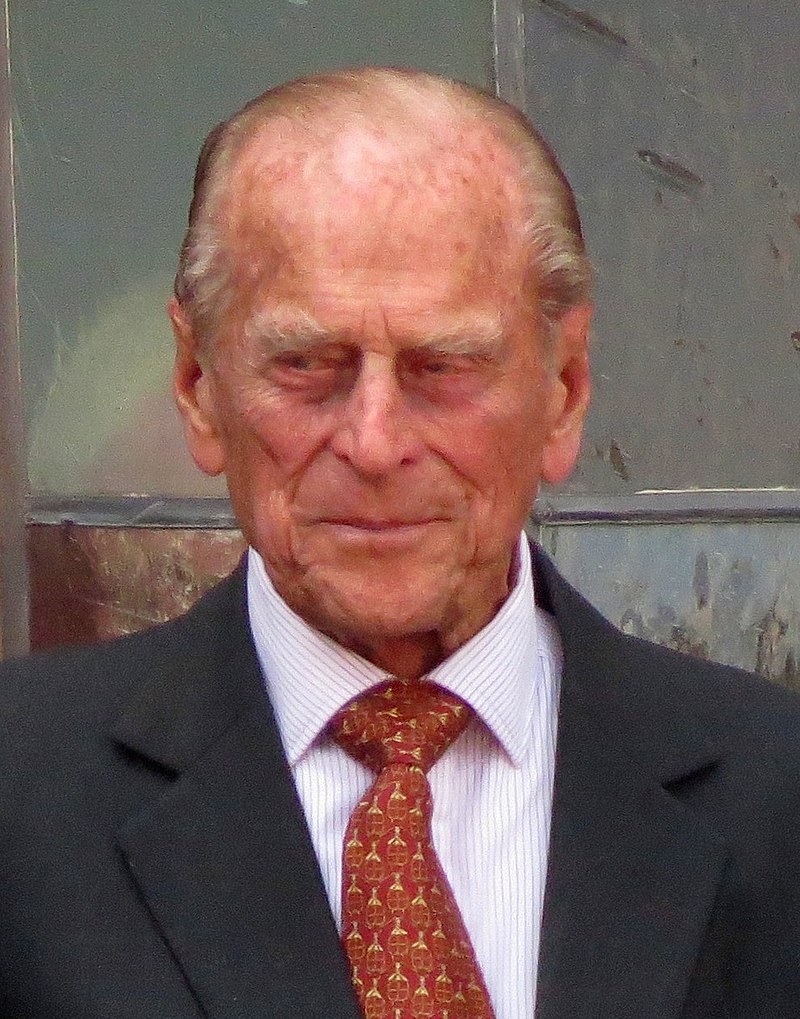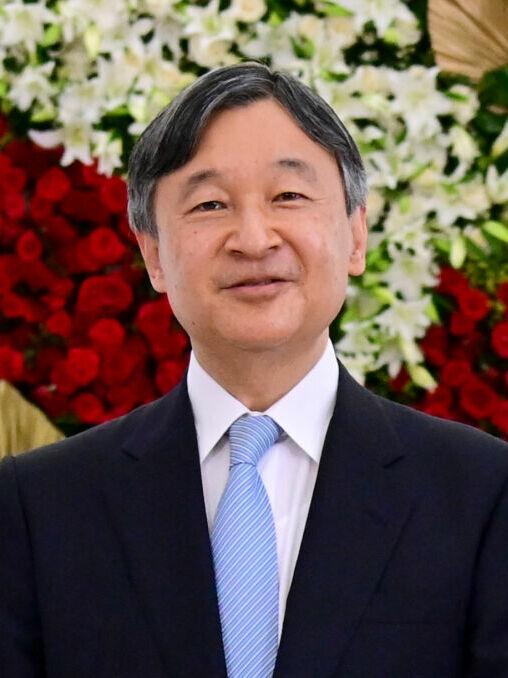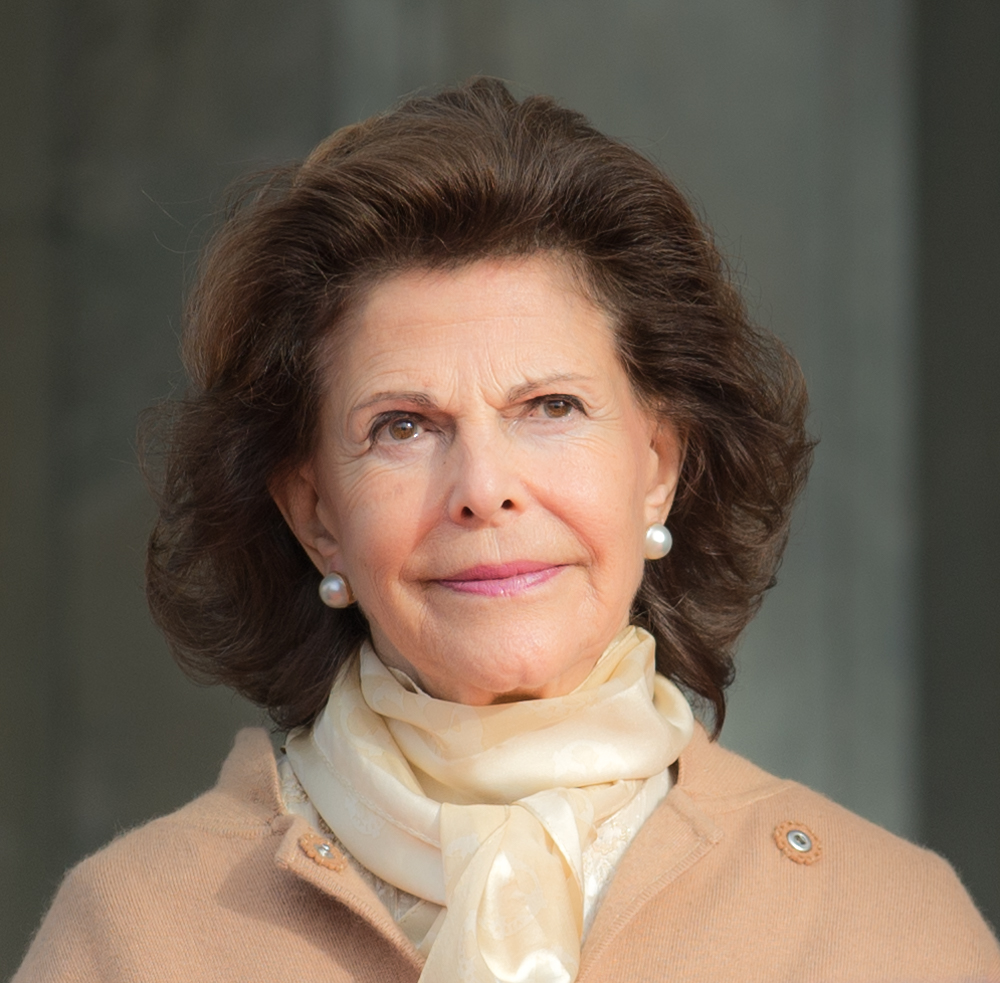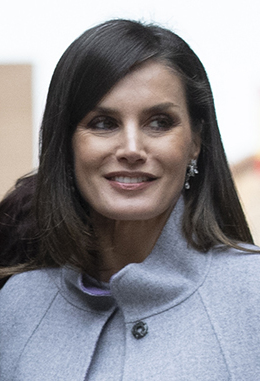by Susan Flantzer © Unofficial Royalty 2014

Prince Philip, Duke of Edinburgh; Credit – Wikipedia
Prince Philip of Greece and Denmark was born at Mon Repos, formerly the summer residence of the Greek Royal Family, on the Greek island of Corfu on June 10, 1921. His parents were Prince Andrew of Greece and Denmark and Princess Alice of Battenberg.
Prince Phillip was christened on an unknown date at St. George’s Church in the Old Fortress in Corfu, Greece according to the rites of the Greek Orthodox Church. His godparents were:
-
- Queen Olga of Greece (his paternal grandmother, born Grand Duchess Olga Konstantinovna of Russia)
- The Corfu City Council (represented by Alexander S. Kokotos, Mayor of Corfu and Stylianos I. Maniarizis, Chairman of the City Council)

Prince Philip’s parents in 1903 – Photo Credit – Wikipedia
Prince Philip has some interesting genealogy and several connections to other royal families. His paternal grandparents were King George I of Greece and Grand Duchess Olga Konstantinovna of Russia. King George was born Prince William of Denmark and was the son of King Christian IX of Denmark and the brother of King Frederik VIII of Denmark, Queen Alexandra of the United Kingdom and Empress Maria Feodorovna of Russia. Philip’s paternal grandmother Grand Duchess Olga Konstantinovna of Russia was the daughter of Grand Duke Konstantine Nikolaevich, the second son of Nicholas I, Emperor of All Russia.
Philip’s paternal aunts and uncles were:
Philip’s maternal grandparents were Prince Louis of Battenberg and Princess Victoria of Hesse and by Rhine. Through his maternal grandmother Princess Victoria of Hesse and by Rhine, Philip is a great-great-grandson of Queen Victoria. Princess Victoria’s mother was Princess Alice of the United Kingdom, the third child of Queen Victoria. Philip’s maternal grandfather, Prince Louis of Battenberg, had a 40-year career in the British Navy and was First Sea Lord. During World War I, at the request of his wife’s first cousin King George V of the United Kingdom, Prince Louis relinquished his German styles and titles and changed his name to Mountbatten. King George V created him Marquess of Milford Haven.
Philip’s maternal aunts and uncles were:
Philip has some interesting first cousins and his royal pedigree is more royal than the royal pedigree of his wife Queen Elizabeth II of the United Kingdom.
Philip’s sisters: Princess Theodora, Princess Cecilia, Princess Margarita, and Princess Sophia
Philip had four sisters, all quite a bit older than him:
- Princess Margarita of Greece and Denmark (1905 – 1981) married Prince Gottfried of Hohenlohe-Langenburg (1897 – 1960), five children
- Princess Theodora of Greece and Denmark (1906 – 1969), married Prince Berthold, Margrave of Baden (1906 – 1963), three children
- Princess Cecilie of Greece and Denmark (1911 – 1937), married Georg Donatus, Hereditary Grand Duke of Hesse (1906 – 1937), three children; Cecilie, her husband, their two sons, and her husband’s mother all died in a plane crash. See the Unofficial Royalty article about this here.
- Princess Sophie of Greece and Denmark (1914 – 2001), married (1) Prince Christoph of Hesse (1901 – 1943), five children (2) Prince Georg Wilhelm of Hanover (1915 – 2006), three children
In 1922, when Philip was a little more than a year old, his uncle King Constantine I was forced to abdicate and his father Prince Andrew was arrested by the military government and court-martialed. Prince Andrew was found guilty and faced possible death. Through the efforts of King George V of the United Kingdom, arrangements were made for Andrew to be spared and with his family to go into exile in Paris. The family settled in the Paris suburb of Saint-Cloud in a house lent to them by Andrew’s French-born sister-in-law Princess Marie Bonaparte.
Prince Philip as a toddler, July 1922
Prince Philip first attended the MacJannet School for Young Americans in Saint-Cloud, France. In 1928, he was sent to England where he lived with his maternal grandmother at Kensington Palace and his maternal uncle George Mountbatten, 2nd Marquess of Milford Haven at Lynden Manor in Bray, Berkshire, England. He started to attend the Cheam School in Ashford Hill, Hampshire, England in 1930. Over the next three years, all four of Philip’s sisters married German royals, his mother was placed in a sanatorium after being diagnosed with schizophrenia, and his father moved to a small apartment in Monte Carlo. Philip spent most of his childhood in the care of other family members and did not see his mother again until the funeral of his sister Cecilie in 1937. In 1938, Philip’s uncle and primary guardian, the Marquess of Milford Haven, died at age 45 of bone marrow cancer.
In 1933, Philip was sent to the Schule Schloss Salem in Germany where money could be saved on his tuition because the family of his brother-in-law, Berthold, Margrave of Baden, owned the school. With the rise of Nazism in Germany, Schule Schloss Salem’s Jewish founder, Kurt Hahn, left Germany and founded Gordonstoun School in Moray, Scotland. After two terms at Schule Schloss Salem, Philip moved to Gordonstoun School where he became Head Boy and captain of the hockey and cricket teams.
After finishing Gordonstoun School, Philip joined the British Royal Navy in 1939. He completed his training at the Royal Naval College Dartmouth, where he was the best cadet in his class. Philip was on active duty during World War II and remained in the Royal Navy until 1952.
Princess Elizabeth (third from left), with King George VI, Lord Louis Mountbatten (standing, third from right) and Queen Elizabeth during a visit to the chapel at the Royal Naval College, Dartmouth, July 23, 1939. Also present is naval cadet Prince Philip of Greece, standing, second from right)
In 1939, during Philip’s first year at the Royal Naval College Dartmouth, the British Royal Family: King George VI, his wife Queen Elizabeth, and their daughters Princess Elizabeth, and Princess Margaret, made a visit. Because of his family relationship (Elizabeth and Philip are second cousins once removed through their descent from King Christian IX of Denmark and third cousins through their descent from Queen Victoria), Philip was asked to join the party to entertain the two young princesses. Elizabeth and Philip had already met in 1934 when she was a bridesmaid at the wedding of her uncle, The Duke of Kent, to Philip’s first cousin, Princess Marina of Greece. However, it was at Dartmouth that the 13-year-old Elizabeth truly took notice of her nearly 18-year-old cousin. It is said that Elizabeth was instantly smitten with the dashing Philip and the two began a correspondence that quickly blossomed into a romance.
Eventually, in the summer of 1946, Philip asked King George VI for Elizabeth’s hand in marriage. The King consented, with the condition that the announcement would be held off until after Elizabeth’s 21st birthday the following year. In March 1947, Philip relinquished his Greek and Danish royal titles, adopted the surname Mountbatten from his mother’s family, and became a naturalized British subject. The engagement of Princess Elizabeth and Lt. Philip Mountbatten was announced on July 10, 1947. The day before the wedding, King George VI bestowed the style His Royal Highness on Philip, and on the morning of the wedding, he was made the Duke of Edinburgh, Earl of Merioneth, and Baron Greenwich.
Philip and Elizabeth were married at Westminster Abbey in London, England on November 20, 1947.
Following their honeymoon, spent at Broadlands (the Mountbatten estate in Hampshire) and Birkhall on the Balmoral Estate, the couple took up residence at Windlesham Moor, a country home in Surrey that was leased for them. They remained at Windlesham Moor until July 1949 when they moved into Clarence House in London.
The couple had four children:
- King Charles III of the United Kingdom (born 1948), married (1) Lady Diana Spencer, daughter of John Spencer, 8th Earl Spencer, had two sons, divorced (2) Camilla Shand Parker-Bowles, no children
- Princess Anne, The Princess Royal (born 1950), married (1) Mark Philipps, had one son and one daughter, divorced (2) Timothy Laurence, no children
- Prince Andrew, The Duke of York (born 1960), married Sarah Ferguson, had two daughters, divorced
- Prince Edward, The Duke of Edinburgh (born 1964), married Sophie Rhys-Jones, had one daughter and one son

Queen Elizabeth and the Duke of Edinburgh with their family in 1979 at Balmoral Castle with two-year-old Peter Phillips in the background; Photo Credit – www.royal.gov.uk
On February 6, 1952, while on a visit to Kenya, Philip broke the news to Elizabeth that her father King George VI had died and they immediately returned to London. Queen Elizabeth’s coronation took place on June 2, 1953.

Coronation Photo; Photo Credit – Wikipedia
With Elizabeth’s accession, it seemed probable that the royal house would become the House of Mountbatten, following the custom of a wife taking her husband’s surname upon marriage. However, both Prime Minister Winston Churchill and Elizabeth’s grandmother, Queen Mary, were in favor of keeping the House of Windsor. On April 9, 1952, Queen Elizabeth issued a declaration that Windsor would continue to be the name of the royal house. Prince Philip supposedly told some friends, “I am the only man in the country not allowed to give his name to his own children.” In 1960, Queen Elizabeth modified the 1952 declaration by declaring that “while I and my children will continue to be styled and known as the House and Family of Windsor, my descendants, other than descendants enjoying the style, title or attributes of Royal Highness and the titular dignity of Prince or Princess, and female descendants who marry and their descendants, shall bear the name Mountbatten-Windsor.”
Then there was a situation with Philip’s titles. On the day before his marriage to Elizabeth, Lt. Philip Mountbatten, who had previously relinquished Greek and Danish styles and titles, was created His Royal Highness The Duke of Edinburgh. Apparently, King George VI was under the impression that since he had given Philip the style of His Royal Highness, it meant he was also giving him the title of prince, which was not so. It wasn’t until February 22, 1957, that Queen Elizabeth corrected this situation and issued a Letters Patent that made her husband a Prince of the United Kingdom of Great Britain and Northern Ireland.

British Royal Family on the balcony of Buckingham Palace, June 2012; Photo Credit – Wikipedia
Prince Philip was the patron of over 800 organizations in the United Kingdom and the Commonwealth with special interests in scientific and technological research and development, the encouragement of sport, the welfare of young people, and conservation and the environment. His first patronages date back to the late 1940s soon after his marriage to Queen Elizabeth.
On May 4, 2017, Buckingham Palace announced Prince Philip decided that he would no longer carry out public engagements. In making this decision, he had the full support of Queen Elizabeth. From 1952 until 2017, Prince Philip made over 620 solo visits to 143 countries. He also accompanied Queen Elizabeth on all her Commonwealth tours and State visits, as well as on most of her public engagements in the United Kingdom.

Accompanying Queen Elizabeth II to the 60th anniversary of D-Day in Bayeux, France, June 6, 2014; Photo Credit – http://www.royal.gov.uk
On February 16, 2021, Prince Philip was admitted to King Edward VII Hospital in London as a precautionary measure after feeling unwell. It was later confirmed that he was being treated for an infection. Prince Philip was transferred by ambulance to St. Bartholomew’s Hospital in London on March 1, 2021, to continue treatment for an infection and for testing and observation related to a pre-existing heart condition. After a successful procedure for his heart condition, Prince Philip was transferred back to King Edward VII Hospital on March 5, 2021, and was discharged on March 16, 2021, when he was taken to Windsor Castle.
Prince Philip, Duke of Edinburgh died at Windsor Castle in Windsor, England on April 9, 2021, at the age of 99, just two months short of his 100th birthday. Buckingham Palace released the following announcement:
It is with deep sorrow that Her Majesty The Queen announces the death of her beloved husband, His Royal Highness The Prince Philip, Duke of Edinburgh. His Royal Highness passed away peacefully this morning at Windsor Castle. Further announcements will made in due course. The Royal Family join with people around the world in mourning his loss.
The funeral took place on April 17, 2021, at St. George’s Chapel, Windsor Castle in Windsor England. It was a ceremonial royal funeral, the same as for Diana, Princess of Wales in 1997 and Queen Elizabeth The Queen Mother in 2002, rather than a state funeral usually reserved for monarchs. The funeral plans reflected Prince Philip’s wishes for a smaller, no-fuss funeral. The arrangements were planned over the years, with Prince Philip’s involvement and Queen Elizabeth II signed off on the funeral plans. Last-minute changes were necessary to ensure compliance with COVID-19 restrictions. After The Duke of Edinburgh’s death, his coffin, covered with his personal standard and a wreath of flowers rested in the Private Chapel at Windsor Castle.
On March 29, 2022, a Service of Thanksgiving for His Royal Highness Prince Philip, Duke of Edinburgh was held at Westminster Abbey in London, England. The Thanksgiving Service was organized because due to COVID-19 restrictions, there could be only 30 guests at the funeral.
On the day of his funeral, Prince Philip’s coffin was placed in the Royal Vault at St. George’s Chapel at Windsor Castle. On September 19, 2022, when his wife Queen Elizabeth II was buried, the coffin of Prince Philip, Duke of Edinburgh was moved from the Royal Vault at St. George’s Chapel to the King George VI Memorial Chapel, located in St. George’s Chapel, where Elizabeth II’s parents King George VI and Queen Elizabeth The Queen Mother, and the ashes of Princess Margaret, his wife’s sister had been interred. There Prince Philip and Queen Elizabeth II were interred together.
Some interesting facts about Prince Philip:
- Philip is the longest-lived male member of the British royal family.
- Philip is the longest-serving, oldest-ever spouse of a reigning British monarch having surpassed Queen Charlotte, wife of King George III.
- Philip and his wife are third cousins through Queen Victoria and second cousins once removed through King Christian IX of Denmark.
- Philip was the oldest living great-great-grandchild of Queen Victoria as well as her oldest living descendant. Other great-great-grandchildren of Queen Victoria, and therefore third cousins, include Queen Elizabeth II of the United Kingdom, King Juan Carlos I of Spain and his wife Sofia, born a Princess of Greece and Denmark; King Harald V of Norway, King Carl XVI Gustaf of Sweden, Queen Margrethe II of Denmark, former King Constantine II of Greece and his wife Anne-Marie, born a Princess of Denmark, former King Michael I of Romania, and Queen Elizabeth II’s paternal first cousins: Prince Richard, Duke of Gloucester; Prince Edward, Duke of Kent; Princess Alexandra of Kent and Prince Michael of Kent.
- In July 1993, through mitochondrial DNA that is transmitted from mother to child, a sample of Prince Philip’s blood was used to confirm the identity of the remains of several members of Empress Alexandra Feodorovna of Russia’s family. Empress Alexandra Feodorovna was a daughter of Princess Alice of the United Kingdom, Queen Victoria’s second daughter, as was Philip’s maternal grandmother Victoria. The female line continued through Philip’s mother Alice of Battenberg.
- The inhabitants of some villages on the island of Tanna in Vanuatu worshipped Prince Philip as a god. The villagers had portraits of the prince and held feasts on his birthday.
- Philip was famous for making remarks that were often interpreted as offensive or stereotypical. Read some of his quotes here.
This article is the intellectual property of Unofficial Royalty and is NOT TO BE COPIED, EDITED, OR POSTED IN ANY FORM ON ANOTHER WEBSITE under any circumstances. It is permissible to use a link that directs to Unofficial Royalty.
House of Windsor Resources at Unofficial Royalty



































